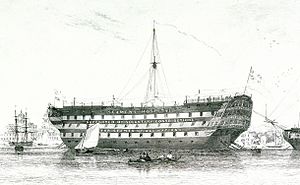Jane Mills Paxton Ramsay and her children immigrated to America aboard the ship "John J. Boyd".
Read this article for information about the John J Boyd and the so-called Latter-Day Saint voyages.
Here is an interesting partial register from the particular voyage that the Paxtons sailed on.
This record shows evidence of John Ramsay and Anthony Clark Paxton Jr in their initial journey to Utah, prior to Jane bringing the rest of the family.
From 1847 to 1869, more than 32,000 British and Irish converts to the Church left their homelands for a new life in pioneer America. When the novelist Charles Dickens visited the Amazon (ship) before it set sail from London on June 4, 1863, to see what the Mormon emigrants were like, he noted: "I…had come aboard this Emigrant Ship to see what eight hundred Latter-day Saints were like…. Nobody is in an ill-temper, nobody is the worse for drink, nobody swears an oath or uses a coarse word, nobody appears depressed, nobody is weeping, and down upon the deck in every corner where it is possible to find a few square feet to kneel, crouch or lie in, people, in every suitable attitude for writing, are writing letters. Now, I have seen emigrants ships before this day in June. And these people are strikingly different from all other people in like circumstances whom I have ever seen, and I wonder aloud, "What would a stranger suppose these emigrants to be!'…I should have said they were in their degree, the pick and flower of England" (Dickens, "The Uncommercial Traveler", Chapter 22). The entire account can be found here.
Also, it is important to note some possible discrepancies in Lois P Bell's biography of Jane Mills Paxton.
Ms. Bell indicates the occupation of Jane's second husband, John Ramsay, as a doctor. This may be true, but it doesn't match the other documentation that we have:
The partial ship register listed above notes John Ramsay's occupation as "Engine Fitter" (Note: A mistake in transcription lists it as "Engine Sitter"). It also notes Anthony Paxton's occupation as "Engine Fitter" (also mistakenly transcribed as "Engine Sitter"). This could be that they took an assignment on the ship to help pay for their passage, although an "Engine Fitter" is generally a skilled engineer or mechanic, so I'm not sure that this would be a temporary assignment without prior experience. This is unknown.
The Mormon Migration website also shows John Ramsay as having taken a prior voyage to America - the first being in 1857, on the George Washington to Boston, on which his occupation was also listed as "Engine Fitter".
The 1870 census in Kanosh, Utah, lists John Ramsay's occupation as "Farmer", which matches James Mills Paxton's note in his autobiography (to be posted shortly): "I went South with the ox train as far as Parowan ... Then I engaged to herd sheep and for that purpose started for shoal creek. A place in the south end of the big desert. The company consisted of my mother and step-father John Ramsey..."
Another piece of information that is included in the biography by Ms. Bell, but can't seem to be confirmed anywhere, is the name of the doctor helping out on the Dreadnaught when Anthony Clark Paxton died.
Just some interesting notes and an attempt to keep things honest and correct.











